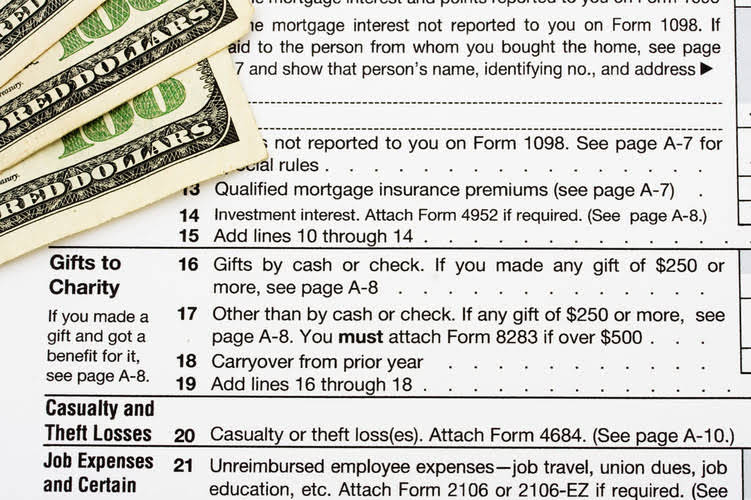
We’ll work with you to understand your specific needs and tailor our services accordingly. Reconciling bank accounts, credit cards, or other financial records manually increases the risk of mistakes like duplicate entries, incorrect amounts, or missing transactions. These errors can throw off the entire financial close process, causing discrepancies between the Bookkeeping for Painters books and actual account balances.
Step 1: Gather your records
Features like reporting and data analysis can also provide valuable insights into your financial health once the cleanup is complete. If you’re not already using accounting software, consider implementing it before starting your clean up—it will make the process significantly smoother. For established businesses, ensure your software is up-to-date and that your team understands its features. Your chart of accounts is the backbone of your financial organization.
Setting Up Your Chart of Accounts
- You can also explore our partnership program for collaborative opportunities.
- Keeping your financial records organized and up-to-date doesn’t have to be a daunting task.
- Accuracy matters too; penalties for underpayment due to negligence or disregard of tax rules can range from 20% to 75% of the underpaid amount (source).
- This proactive approach keeps your finances in order and strengthens your business’s financial stability.
- It’s a list of all the accounts you use to record your financial transactions.
- In this blog, we’ll discuss everything from collecting receipts and ensuring tax compliance to reconciling accounts and adjusting expense categories.
- If you struggle with disorganization in accounting, you need to know how to fix bad bookkeeping.
You don’t need to create a new Social Security account to make the change. Given the frequency of month-end closings, you and your accounting staff would be well served to make this process as easy and efficient as possible. By taking advantage of our Accounts Receivable Automation platform and Flywire software, you can drive that simplicity throughout your A/R efforts, saving you time, labor, and money. As previously mentioned, there are typically general guidelines regarding what information you’ll need to use and how it should be managed.

Embracing Automation in Bookkeeping

Double-check that all necessary tax forms are prepared and filed on time to prevent penalties and ensure smooth tax reporting. Look for duplicate accounts that may have been created by mistake and consolidate them where necessary. Having multiple accounts for the same category can confuse and make reporting more complicated. At the same time, identify missing accounts that are needed for proper categorization and create them to maintain a complete and accurate financial structure. You address past errors, reconcile transactions, and categorize expenses properly.
Check Payroll Records and Taxes
Investing in proper training for your normal balance staff on accounting principles and software usage is essential. A well-trained team can identify and address potential issues proactively, ensuring your books stay clean. This includes understanding basic accounting principles, how to use your chosen software effectively, and company-specific procedures. If you’re looking to expand your team with skilled professionals, check out FinOptimal’s careers page. For businesses looking to enhance their team’s expertise, consider FinOptimal’s partnership program for access to valuable resources and training. We’re committed to helping businesses optimize their financial processes.
Have A Streamlined Process
- Cleaning up accounts receivable ensures that your records accurately reflect what customers owe you and helps improve cash flow.
- If you find any personal expenses on the company credit card, remove them from your business records.
- Establishing a routine for reviewing and updating your financial records is essential.
- Organizing these documents by category and date will streamline the clean-up process and make it easier to identify any missing information.
- As such, we recommend that you draft an internal plan outlining specific actions and then repeat those steps every month without variance.
- Financial Cents provides unlimited document storage, allowing your firm to securely store all necessary files without worrying about space limitations.
If anything seems off, revisit earlier cleanup steps to resolve overlooked issues. During a bookkeeping cleanup, it’s common to encounter discrepancies or missing transactions. These issues can arise from forgotten entries, incomplete records, duplicate records, or miscommunications about business expenses. Ensure you cover all the client’s accounts (business checking, savings, credit cards, loans) and financial activity. Otherwise, you’ll miss some documents, resulting in incomplete or inaccurate records, which defeats the purpose of the cleanup.
- Every month, accountants and bookkeepers close the books for their clients.
- When it comes to tidying up your books, create a checklist to help you track what needs done and cross items off your to-do list.
- With effective tools like Xenett, automation eliminates the risk of human error and simplifies financial processes within companies.
- A clean-up can also reveal potential tax deductions you might have missed, helping minimize your tax liability.
- Here are some of the most common issues accountants and bookkeepers face when closing the books at the end of the month.
- By implementing these practices, you not only keep your books clean but also safeguard your business against potential legal complications related to tax compliance.
Categorize transactions accurately
You can minimize the need for major overhauls by implementing some simple preventative measures. Think of it like regular house cleaning—a little effort upfront saves you a massive deep clean later. It’s not always straightforward, and several common challenges can make the process tricky. Understanding these hurdles ahead of time can help you prepare and make the cleanup smoother. Your onboarding process sets the foundation for your entire relationship with a client.
Unraveling Chaos: The Impact of Financial Disorganization on Small Business Owners
Maintaining accurate financial records for your clients is an essential part of bookkeeping. However, bookkeeping often involves intricate accounting processes that require diligence and precision. How can businesses ensure compliance with tax regulations during a clean-up? To ensure compliance, stay informed about any changes in tax laws that may affect your business. Consulting with a tax professional or accountant is also recommended to gain expert insights into maintaining accurate records in line with current regulations.

Xenett simplifies this process by highlighting inconsistencies in your chart of accounts, saving valuable time and improving accuracy in financial reporting. Zeni preserves a historical copy of client data, ensuring GAAP compliance and matching records accurately with bank records, investment records, and other documentation. Our platform also offers user-friendly access to comparative data over your business’s operational lifespan, providing essential information about long-term growth. Even with the best intentions, mistakes can bookkeeping clean up happen during the bookkeeping clean-up process.





Noticias Relacionadas
dolly kasyno 44
frumzi kasyno 34
diamenty kasyno gta online 2024 15